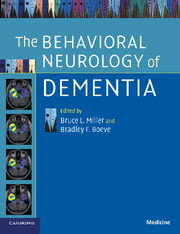Book contents
- Frontmatter
- Contents
- List of contributors
- Section 1 Introduction
- Section 2 Cognitive impairment, not demented
- 12 Cerebrovascular contributions to amnestic mild cognitive impairment
- 13 Mild cognitive impairment
- 14 Mild cognitive impairment subgroups
- 15 Early clinical features of the parkinsonian-related dementias
- 16 Dementia treatment
- 17 Dementia and cognition in the oldest-old
- Section 3 Slowly progressive dementias
- Section 4 Rapidly progressive dementias
- Index
- References
15 - Early clinical features of the parkinsonian-related dementias
Published online by Cambridge University Press: 31 July 2009
- Frontmatter
- Contents
- List of contributors
- Section 1 Introduction
- Section 2 Cognitive impairment, not demented
- 12 Cerebrovascular contributions to amnestic mild cognitive impairment
- 13 Mild cognitive impairment
- 14 Mild cognitive impairment subgroups
- 15 Early clinical features of the parkinsonian-related dementias
- 16 Dementia treatment
- 17 Dementia and cognition in the oldest-old
- Section 3 Slowly progressive dementias
- Section 4 Rapidly progressive dementias
- Index
- References
Summary
Introduction
Neurologists are confronted with complex patients in whom accurate diagnoses and improvement of symptoms are expected. One useful strategy is to determine if a patient has a constellation of symptoms and findings that fits within a broad category or syndrome, which then narrows the differential diagnosis and allows the clinician to commence a focused work-up. For example, the differential diagnosis and spectrum of available diagnostic studies for a patient with dementia, or a patient with parkinsonism, are rather wide; these are far more restricted in those who have elements of both dementia and parkinsonism. Furthermore, an insidious onset and progressive course suggests a neurodegenerative disease as the likely underlying process. This scenario is relatively common for community neurologists and very common for behavioral neurology and movement disorder specialists at academic centers.
The primary differential diagnosis in a patient with dementia plus parkinsonism who has experienced an insidious onset and progressive course, in probable decreasing prevalence in the population, includes dementia with Lewy bodies (DLB), Parkinson's disease (PD) with dementia (PDD), progressive supranuclear palsy (PSP), corticobasal syndrome (CBS)/corticobasal degeneration (CBD), and frontotemporal dementia (FTD) with parkinsonism linked to chromosome 17 (FTDP-17). One useful exercise in the clinic is to use the interview and examination to explore the following areas of symptomatology: cognitive/neuropsychological, behavioral/neuropsychiatric, motor/ extrapyramidal, sleep, autonomic, sensory and other/miscellaneous features. In typical cases, these clinical features permit relatively easy differentiation (Table 15.1).
- Type
- Chapter
- Information
- The Behavioral Neurology of Dementia , pp. 197 - 212Publisher: Cambridge University PressPrint publication year: 2009
References
- 2
- Cited by



